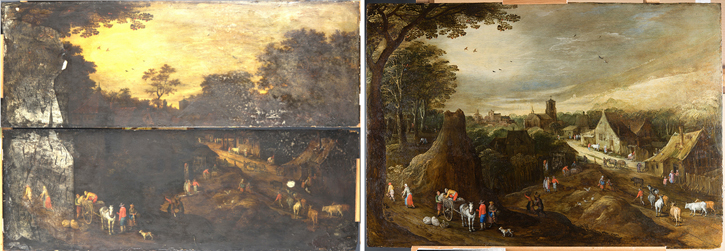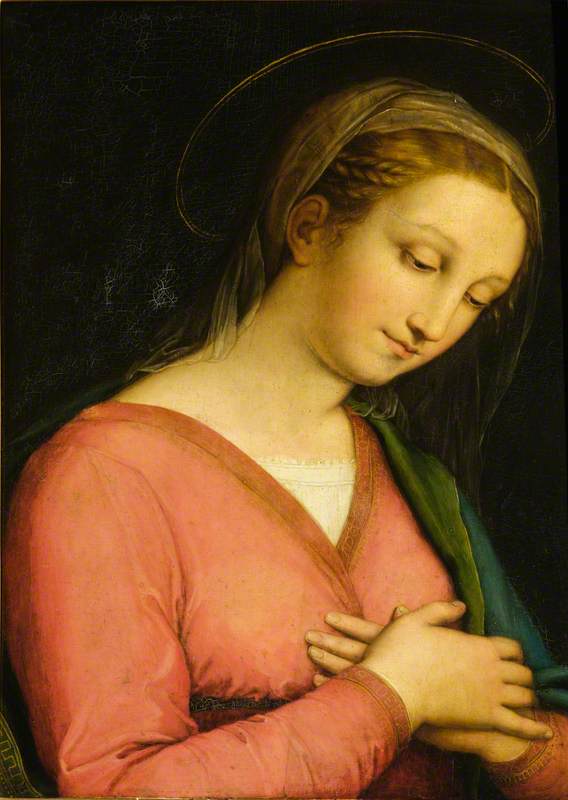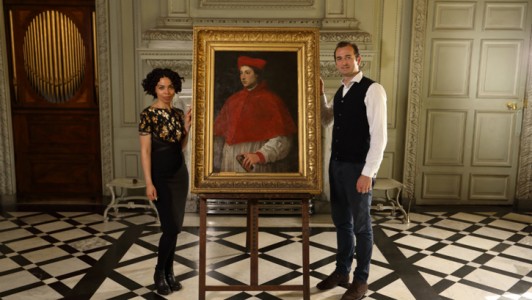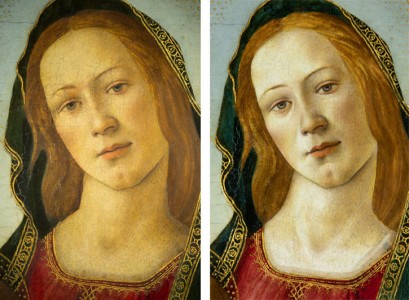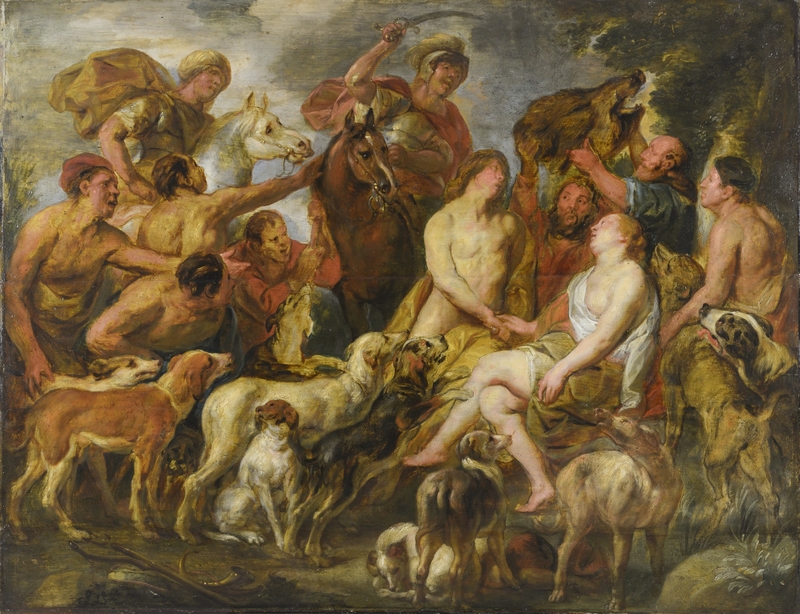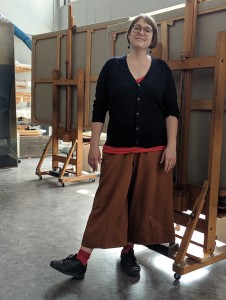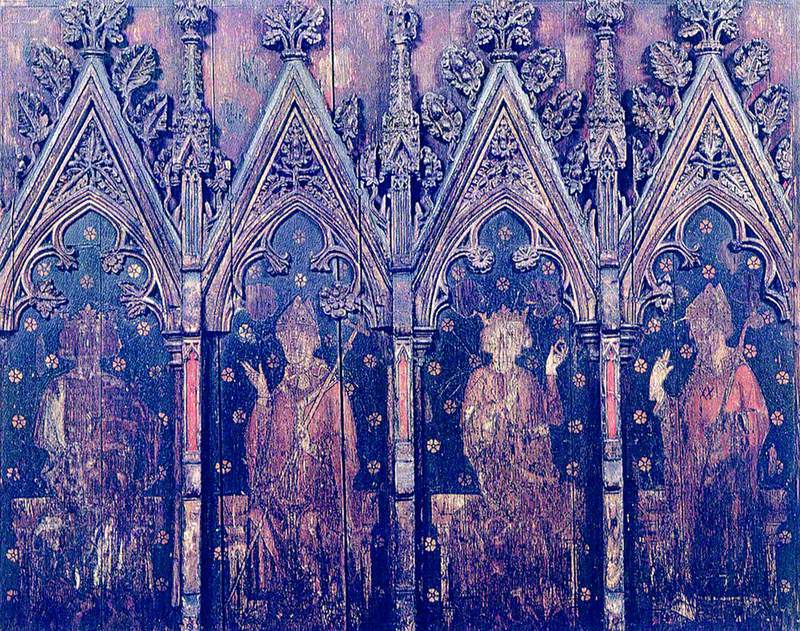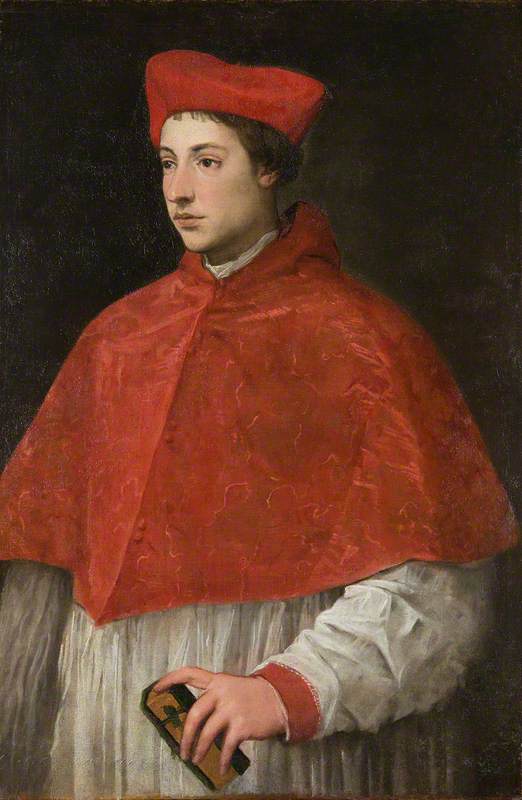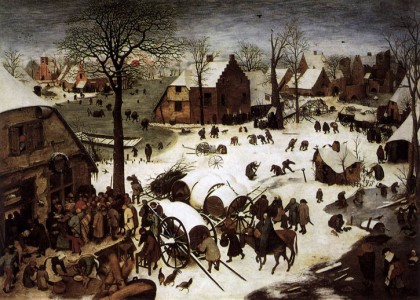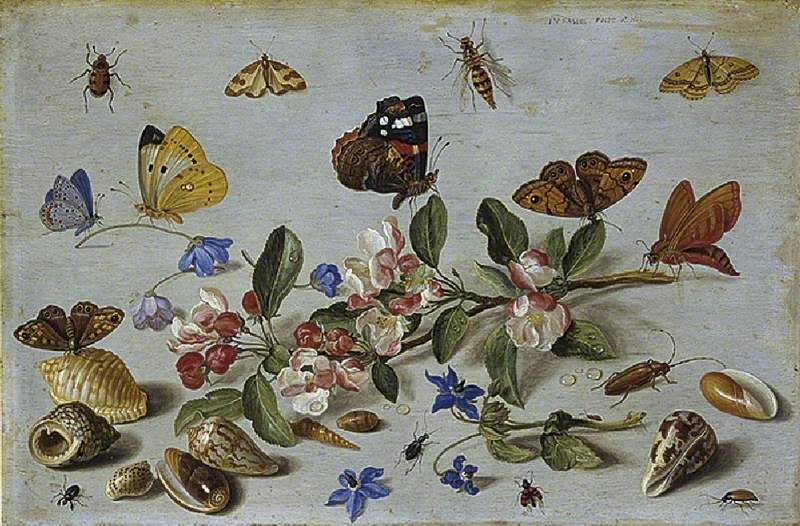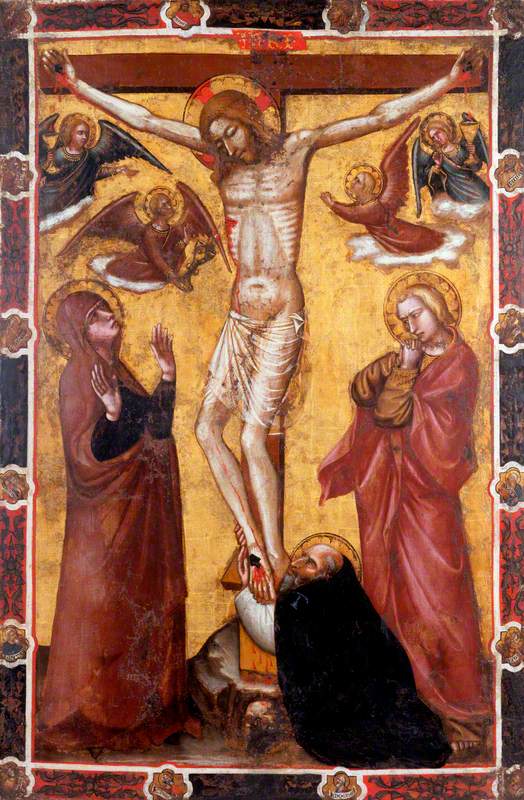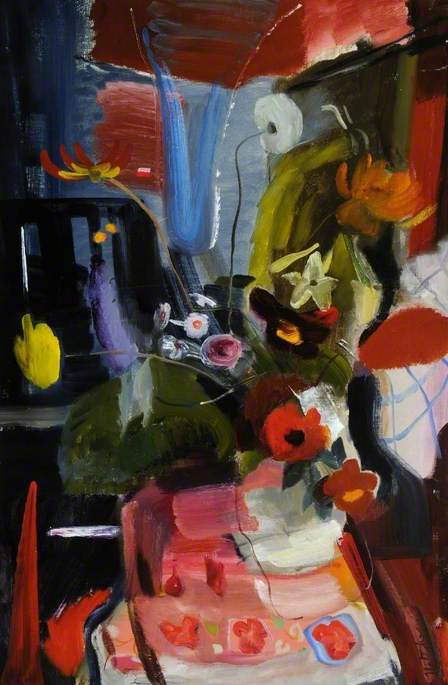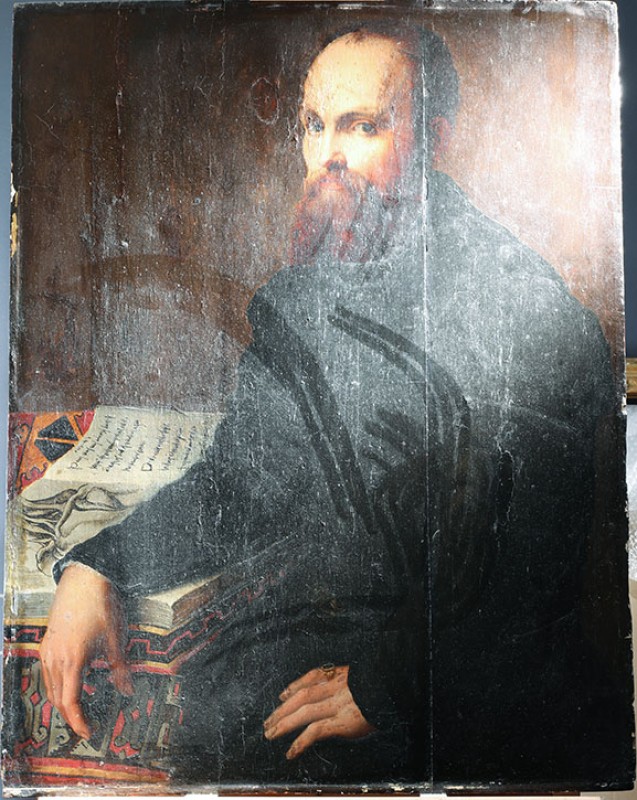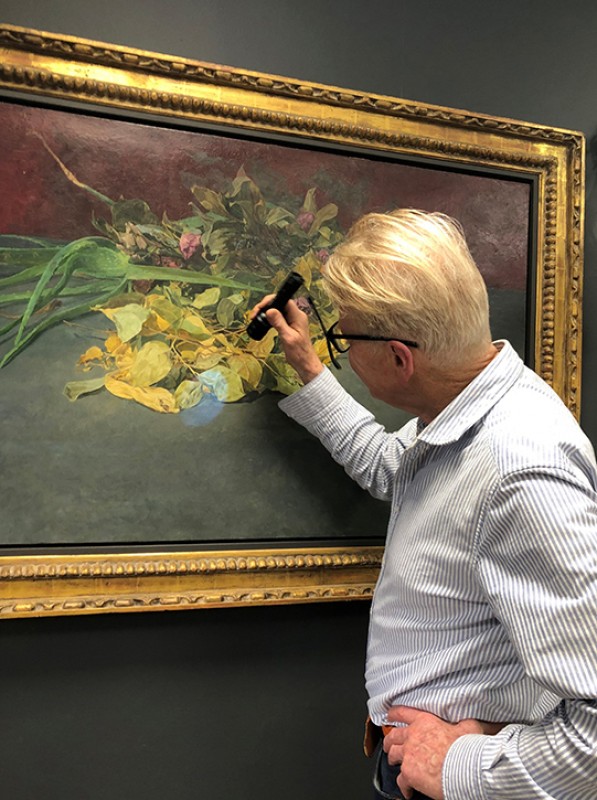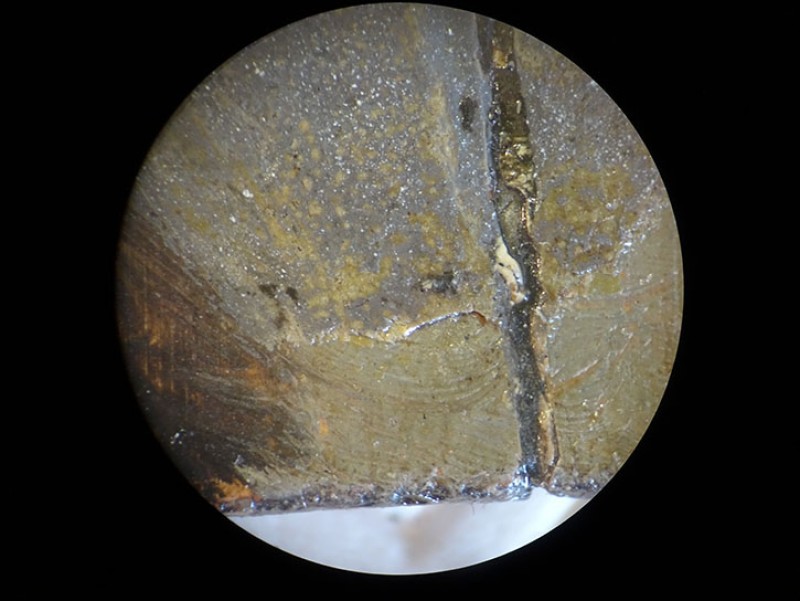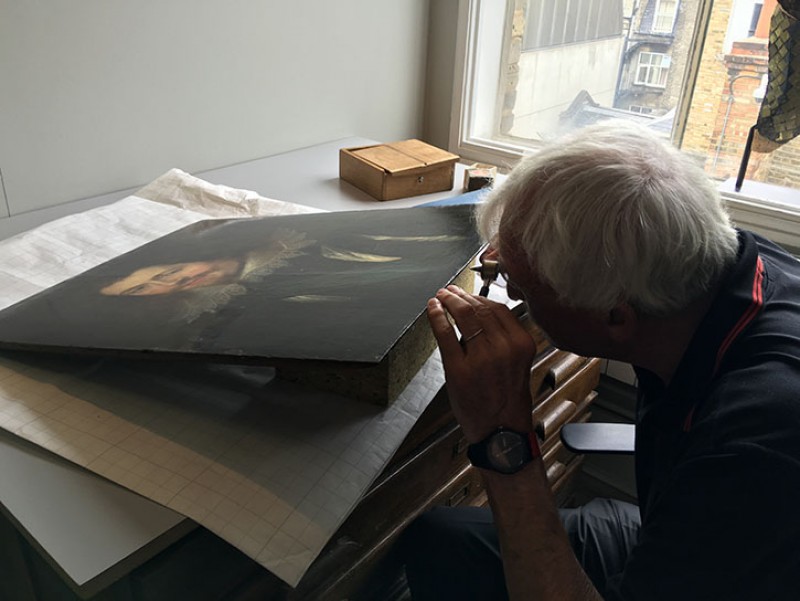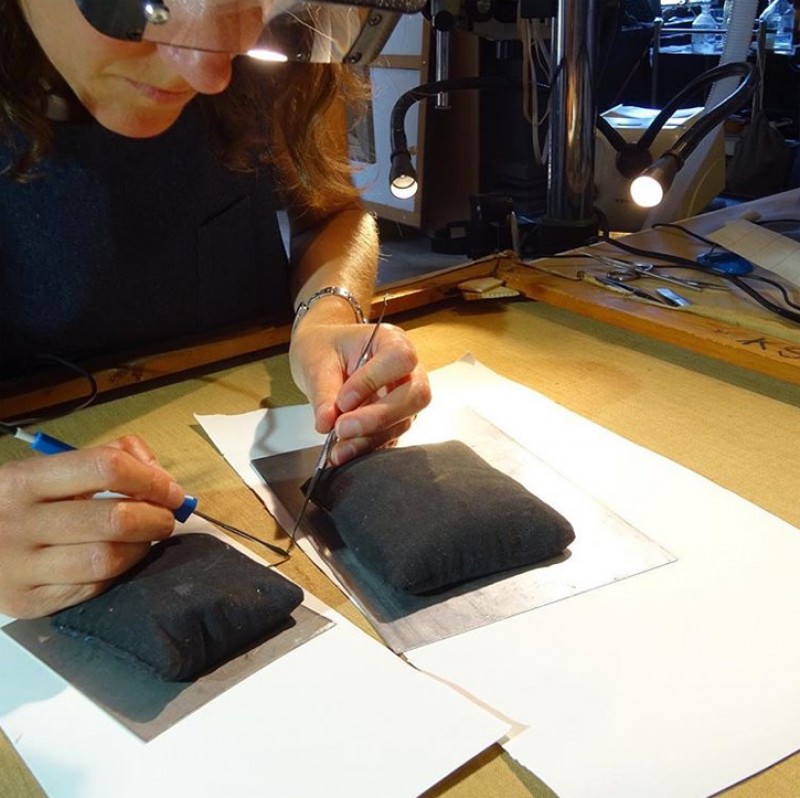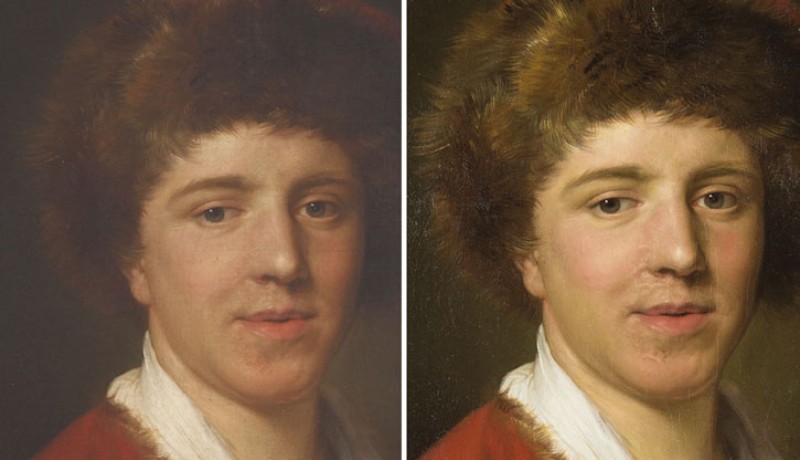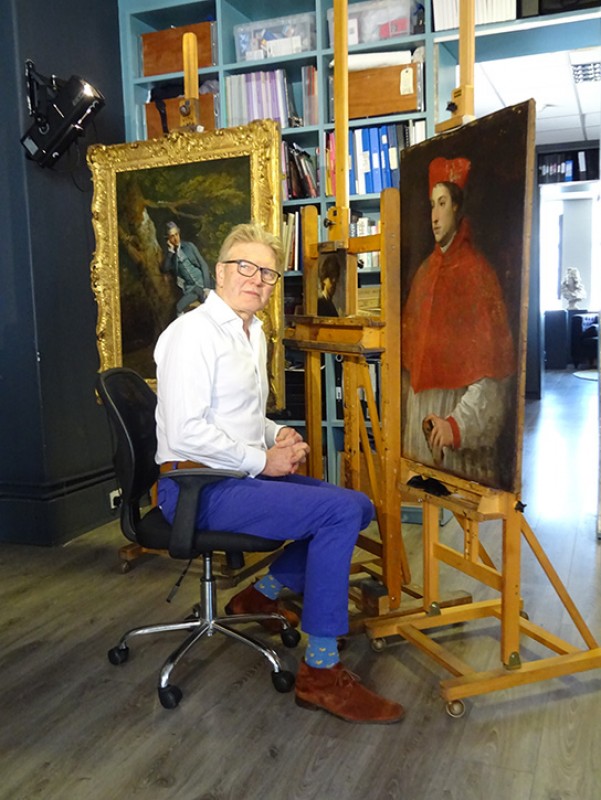In this series, 'Conservation in focus', Simon Gillespie, Director of Simon Gillespie Studio, explores the art of conservation. In each article, Simon looks in depth at a particular technique or tool that is crucial to conservators and explores the challenges – and triumphs – associated with their everyday work.
As a conservator who has treated paintings for over 40 years, one thing never gets old: the delight of seeing a picture brought back from a damaged, dirty object to an artwork which can be displayed and enjoyed.
Simon Gillespie working on a picture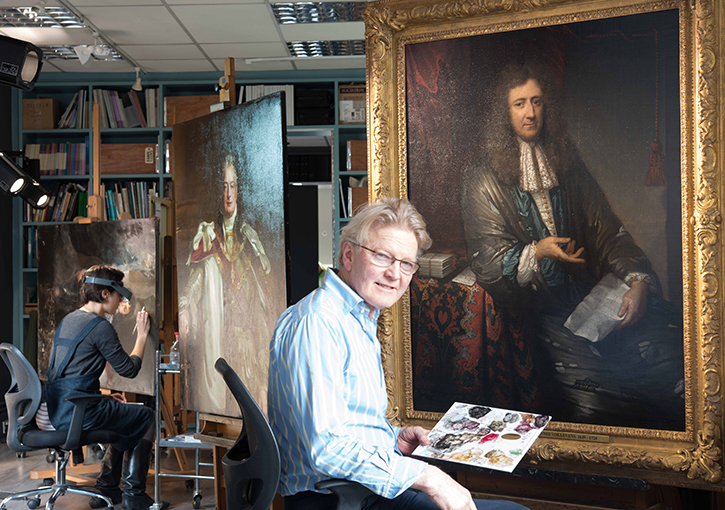
In this series of articles, I am going to show you some of the tools that paintings conservators use in their work, and explain to you how my team and I have used these tools when treating specific artworks that you can see online – on the Art UK website – and in person at various locations around the UK.
If you've seen the BBC Four television programme Britain's Lost Masterpieces, you may recognise me as the conservator on the series. The premise of the programme is this: the art historian Bendor Grosvenor, whom I've worked with for many years and who presents the programme, scours the Art UK website looking for paintings which are not attributed to a specific artist (they might be marked as 'unknown artist' or 'Italian School', for example) or which he believes have possibly been attributed to the wrong artist, and could be by a great artist.
Simon Gillespie being filmed for 'Britain's Lost Masterpieces'
Often, a painting has been so interfered with over time that the style, brushwork, colours and technique – the clues which would tell you who the artwork is by – have become obscured. Damage might have disfigured it, or layers of accumulated airborne dirt might be muddying the original colours. The quality of the painting will be disguised, and it might not be recognisable as a work by the actual artist. Carrying out conservation treatment is important for the preservation of the object and for our enjoyment of the artwork but it can also be helpful when seeking the correct attribution of a work. Having a painting correctly attributed is important for our understanding of the painting, of the artist, of art history. It is also important for the collection that the painting is in.
Bendor Grosvenor and Simon Gillespie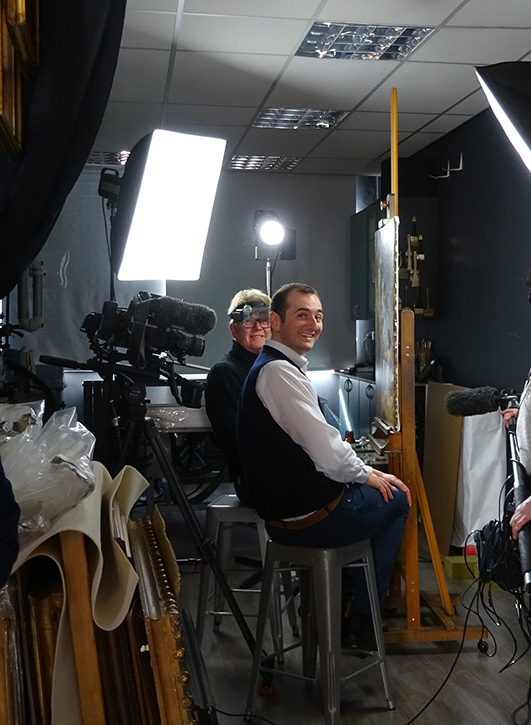
While Bendor dives into libraries and archives looking for sources to trace the work back to a particular artist (such as inventories, invoices, letters or and exhibition catalogues), it is my job to carry out analysis of the painting to understand its history, and then to carefully repair any damages and to remove dirt, discoloured varnishes and disguising overpaint. At the end of the process, the picture and accompanying documentary evidence are shown to an expert, in the hope that they will recognise the picture to be by the artist they specialise in. As you may already know, we have had some really exciting successes on the programme since the first season in 2016.
In the following series of short articles, I am going to show you a bit more of the work that went into the treatment of the artworks you may have seen on Britain's Lost Masterpieces over the past few years, and also some other pictures which are on the Art UK website and which I've had the pleasure of treating over the course of my career.
Simon Gillespie, Director at Simon Gillespie Studio
